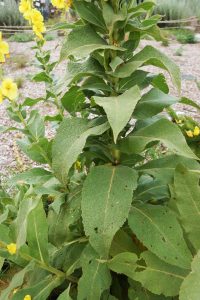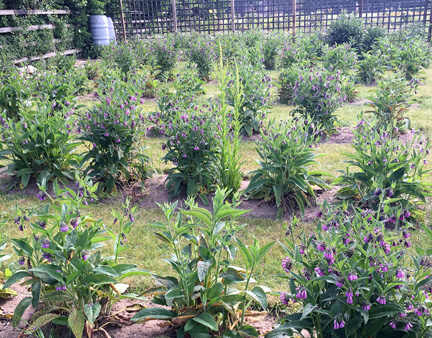
Grow your own organic Fertiliser.
| 20th July 2020COMFREY
I reserve an area of the dye garden for a very important and amazing herb – COMFREY. Not the common comfrey. This is BOCKING 14. (Symphytum x Uplandicum).
It is a member of the borage family and is a favourite amongst organic gardeners, being one of the best sources of plant nutrients.
One advantage of Bocking 14 is that it is sterile and doesn’t make viable seed and is therefore less invasive than other types of comfrey.
The flowering period is from May – September when it produces a pretty pink curl of flowers that bumblebees adore.
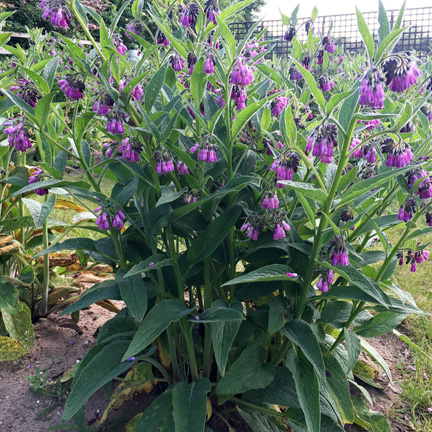
You can make your own organic feed from the leaves in the form of comfrey tea or comfrey concentrate. All plants need micro-nutrients for maximum growth, bloom, and fruiting. These are nitrogen, phosphorous, and potassium. Comfrey has these three major nutrients plus high levels of calcium.
In addition to feeding my fruit and vegetables, I feed my Japanese indigo plants about every two weeks with a diluted comfrey concentrate as they are heavy nitrogen feeders and I believe I am well rewarded with lush growth and a noticeable increase in leaf production. Do not underestimate the benefits of well-controlled fertilisation. You will be well rewarded
For more information visit my sister website:
HOLLYHOCK
Hollyhocks belong to the same family as hibiscus. It is a classic cottage garden flower (Alcea rosea Nigra) which blooms in mid-summer with numerous flowers on tall spikes.
‘Nigra’ is a classic hollyhock whose deep maroon blooms look almost black. The flowers grow on rigid, towering spikes and reach a height of 5 – 6 feet tall.
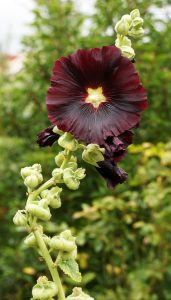
However, did you know the dried flower head makes a very useful natural dye?
A wide range of colours can be achieved depending on the materials used – the length of time in the dye bath – and the after-baths applied.
More details on this in a future blog. – keep watching!
Seeds available in my shop from October.
COREOPSIS
Also called tickseed or Dyer’s coreopsis (Coreopsis tinctoria)
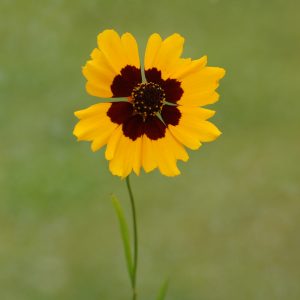
An annual coreopsis readily self-sows – all the flowers you see in the image are self-seeded and low maintenance.
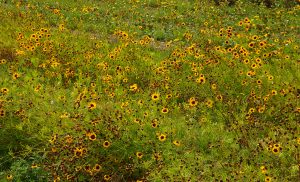
In the language of flowers, coreopsis means “always cheerful” and they do indeed give a lovely cheerful presence wherever they are grown.
Mid-July and my coreopsis beds are looking beautiful in full flower.
I will harvest the flower heads regularly throughout the season – picking more flowers will encourage more blooms from summer into autumn.
After picking I will thoroughly dry them before storing to use later on in the year when I am not so busy in the garden!
MULLIEN
Mullien in my view deserves a place in the dye garden.
It is a handsome herbaceous biennial growing up to 7 feet tall.
During its first year, it is developing a root system and the leaves form a rosette of soft, furry leaves. The upright stem shoots up from the centre of the rosette during the second year of growth and the pretty yellow flowers develop along the entire length of the stem from June – September.
It is the leaves that are used to extract a yellow/gray-green dye on protein fibres mordanted with alum. If you would like a deeper colour steep the dyed material in a copper pot and leave to cool overnight.



